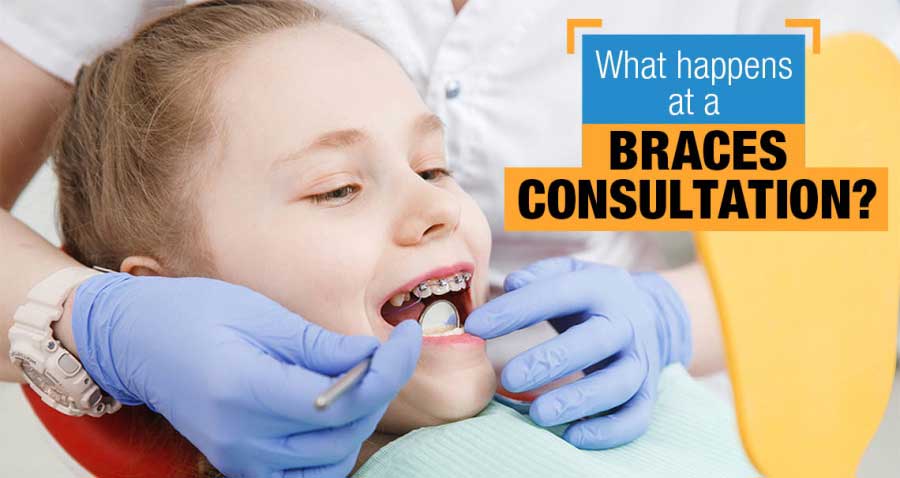Comprehensive Overview to Orthodontics Procedures for Correcting Oral Misalignments
In the world of orthodontics, the journey to accomplishing a flawlessly aligned smile includes a myriad of procedures tailored to deal with oral misalignments. From conventional braces to invisible aligners and even medical alternatives, the field of orthodontics uses a variety of options to resolve varying levels of dental abnormalities. Understanding the ins and outs of each procedure, including their systems, advantages, and prospective disadvantages, is critical in making educated decisions about one's orthodontic therapy. As we navigate through the thorough overview to orthodontic treatments for remedying oral misalignments, the intricate details of each method will unfold, clarifying the course toward a harmonious and functional oral alignment.
Orthodontic Procedures Review

Along with standard braces and clear aligners, orthodontists may likewise advise other treatments like headgear, palatal expanders, or retainers to resolve particular placement problems (cumming orthodontics). These procedures are tailored to each person's distinct demands and may include a combination of treatments to attain the desired results. Normal modifications and tracking are essential components of orthodontic treatment to make sure progression is on track and to make any type of necessary adjustments in the process. By undergoing orthodontic procedures, individuals can not just achieve a straighter grin but likewise boost their overall oral health and function.
Traditional Braces: How They Work
When thinking about orthodontic therapies for dental imbalances, traditional dental braces stand out as a reliable technique for fixing teeth placing. Traditional braces are composed of brackets, cables, and bands that function together to apply constant pressure on the teeth, gradually relocating them right into the desired positioning.
One key element of just how traditional braces job is the procedure of bone renovation. As stress is put on the teeth through the braces, the bone bordering the teeth is improved to sustain the brand-new tooth positions. This improvement is crucial for the long-term stability of the remedied placement. Patients will need routine modifications at the orthodontist's workplace to make certain the braces proceed to use the proper stress for effective teeth movement.
Invisible Aligners: Advantages And Disadvantages
These clear, custom-made trays are basically undetectable when worn, making them an enticing choice for individuals looking for a more cosmetically pleasing orthodontic treatment. Patients can eliminate the aligners before consuming or brushing their teeth, lowering the danger of food getting stuck in the device and streamlining the cleaning procedure.

Surgical Orthodontic Options
Surgical treatments in orthodontics existing practical options for resolving intricate dental imbalances that might not be efficiently solved via traditional orthodontic treatments. While standard dental braces and unseen aligners can deal with several orthodontic concerns, specific situations need surgical treatment to attain optimum outcomes. Surgical orthodontic choices are usually suggested for severe malocclusions, significant jaw disparities, and instances where the underlying bone structure needs alteration to attain appropriate positioning.
One common medical orthodontic treatment is orthognathic surgical treatment, which involves rearranging the use this link jaws to fix functional concerns such as problem chewing or talking. This surgical procedure is commonly carried out in collaboration with an orthodontist that assists straighten the teeth before and after the treatment. Surgical orthodontics may additionally include procedures to subject impacted teeth, get rid of excess periodontal tissue, or improve the jawbone to develop a much more harmonious face profile.
Before considering medical orthodontic options, people go through a comprehensive examination to identify the need and potential advantages of such interventions. cumming braces. While surgical treatment might seem overwhelming, it can considerably boost both the function and appearances of the smile in cases where traditional orthodontic therapies fail
Retainers and Post-Treatment Treatment

Post-treatment treatment entails following the orthodontist's instructions carefully. This might include proper oral hygiene methods, participating in follow-up appointments, and wearing the retainers as recommended. Failing to follow post-treatment treatment guidelines can lead to regression, where the teeth slowly return in the direction of their initial placements. Consistent retainer wear, good oral hygiene, and regular dental check-ups are necessary for keeping the outcomes attained via orthodontic surgical procedure and ensuring the long-term stability of the corrected dental alignment.
Verdict
In conclusion, orthodontic treatments provide numerous choices for correcting dental imbalances. Surgical orthodontic choices are readily available for a lot Find Out More more severe misalignments. Overall, orthodontic procedures can properly enhance oral wellness and aesthetic look.
As we browse with the thorough guide to orthodontic treatments for dealing with dental imbalances, the intricate details of each approach will unfold, losing light on the path my review here towards a unified and functional dental positioning. - orthodontics
One of the most typical orthodontic therapies is the usage of braces, which consist of metal braces and cords that use gentle pressure to slowly move teeth right into the wanted position.When thinking about orthodontic therapies for oral imbalances, typical braces stand out as a time-tested technique for remedying teeth placing. In addition, invisible aligners may not be suitable for complex orthodontic problems that need even more considerable teeth motion, as they are commonly recommended for mild to moderate cases. Retainers are custom-made orthodontic devices developed to hold teeth in their fixed settings after the completion of orthodontic treatment.